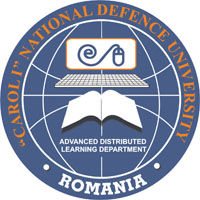GAME BASED LEARNING IN TEXTILE ENGINEERING EDUCATION
GAME BASED LEARNING IN TEXTILE ENGINEERING EDUCATION
Author(s): Mariana URSACHE, Dorin Savin IONESI, Dorin DANSubject(s): Education
Published by: Carol I National Defence University Publishing House
Keywords: game based learning; collaborative learning; student centered learning; web application
Summary/Abstract: The purpose of this paper is to describe how the game based learning is working in academic context, how we have used it and what kind of experiences we have got of it. One of the objectives of using serious games for formative purposes is to help students to improve their learning and thinking skills. This paper presents how a practical laboratory within the curricula of "Knitting and Clothing Technology" BSc program at the Faculty of Textiles, Leather and Industrial Management from Iaşi, Romania, have been taught experimentally through the game based learning method. The game was designed in php and html programs. The user interface allows the player (student) to interact with game elements, for example: play, load/save, end game, options buttons, and exit. The interface also includes some built-in information: game name, variance, rules. At the end of game, the score and time consumed are given. The game was designed so that it can be used both for learning and for assessment. The new learning method was applied with two groups of twelve students each. Other two groups of students (considered as control groups) have studied using the usual method. The level of understanding through the acquisition of knowledge and abilities revealed the effects of the applied method. The paper gives an idea about teaching certain concepts and processes like those in knitting technology in the form of a game. Among the benefits from using games in learning that one can take into consideration are the followings: the students were more interested and involved in their learning when playing the game than when were just sitting and listening; the small-scale experiment may be replicated or adapted to other units within Knitting and Clothing Technology curricula which aim to equip students with clear understanding of technological processes.
Journal: Conference proceedings of »eLearning and Software for Education« (eLSE)
- Issue Year: 11/2015
- Issue No: 03
- Page Range: 598-601
- Page Count: 4

